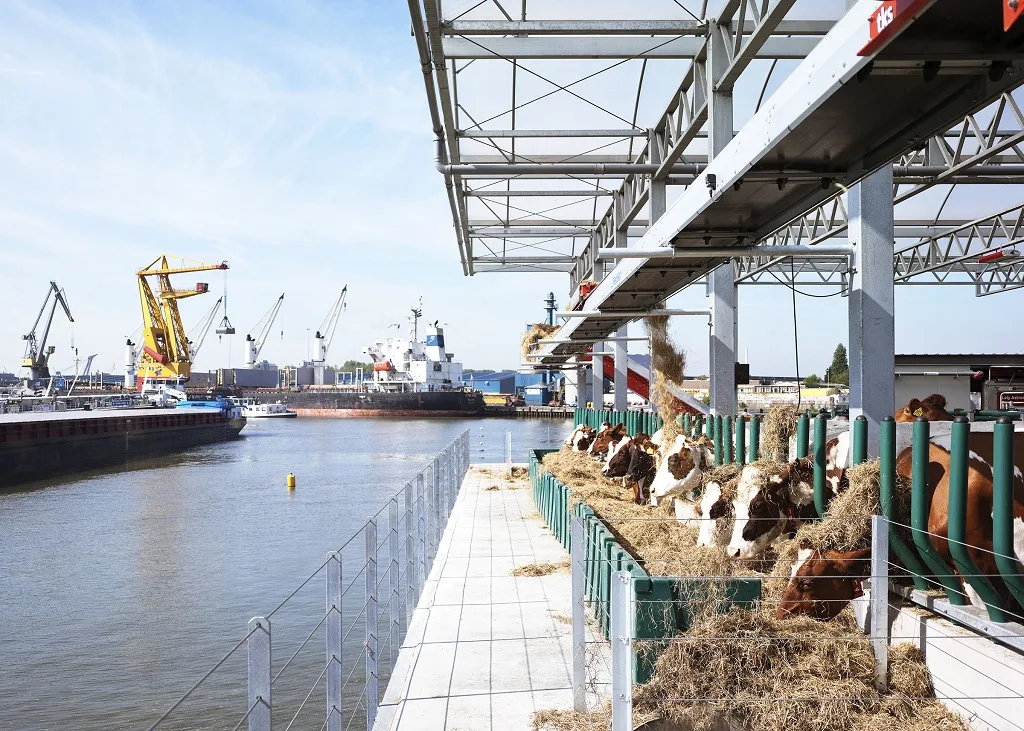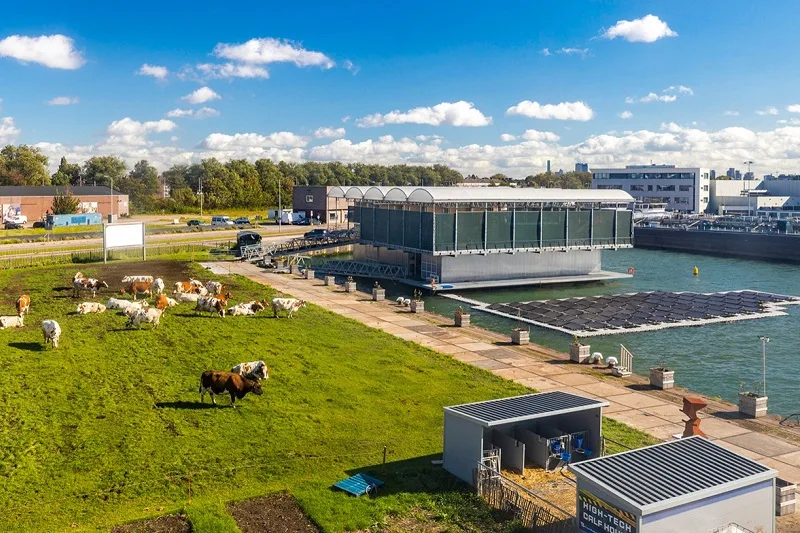The concept of floating farms, though futuristic, has already started making waves in the agricultural sector. This innovative technology addresses the pressing issues of land scarcity, food security, and sustainable farming practices. Let’s delve into the details of this remarkable advancement.
What Kind of Technology and When Did It Appear
Floating farm technology is an agricultural innovation designed to grow crops and rear livestock on floating platforms over water bodies. The idea first emerged in the early 21st century as a response to the increasing challenges posed by climate change, urbanization, and the need for sustainable farming methods.
One of the earliest and most notable implementations was in the Netherlands, a country renowned for its innovative water management solutions. The Floating Farm Rotterdam, launched in 2018, is a prime example of this technology in action. This floating dairy farm is designed to produce fresh milk in urban areas, utilizing minimal land resources while promoting sustainable agricultural practices.
How It Works and How It Is Arranged
Floating farms operate on platforms designed to float on water bodies such as rivers, lakes, or coastal areas. These platforms are constructed with materials that ensure buoyancy and stability, capable of withstanding various weather conditions. The infrastructure includes a combination of hydroponic systems for growing crops and specially designed enclosures for livestock.
Hydroponics, a soil-less farming technique, plays a crucial role in floating farms. Plants are grown in nutrient-rich solutions, allowing for efficient use of water and nutrients. Livestock enclosures are equipped with waste management systems that recycle waste into fertilizer for crops, creating a closed-loop system. Advanced technology, such as IoT sensors, monitors environmental conditions and ensures optimal growth and health of both plants and animals.
What Problems It Is Designed to Solve
The primary aim of floating farms is to combat the issue of land scarcity, especially in densely populated urban areas. By utilizing water surfaces for farming, these farms free up valuable land for other purposes and reduce the pressure on existing agricultural lands.
Floating farms also address the challenge of food security by enabling local food production. This reduces dependency on imports, lowers transportation costs, and ensures a steady supply of fresh produce and dairy products. Moreover, the controlled environment of floating farms minimizes the impact of adverse weather conditions, ensuring consistent yield.
Another significant problem tackled by floating farms is environmental sustainability. Traditional farming methods often lead to soil degradation and water pollution. Floating farms, with their efficient use of resources and closed-loop systems, significantly reduce the environmental footprint of agricultural practices.
Where It Is Already Used
The concept of floating farms is gradually gaining traction worldwide. In addition to the Netherlands, other countries are exploring and implementing this technology.
In Singapore, a city-state with limited land resources, the government has initiated projects to develop floating fish farms. These farms aim to enhance local seafood production and reduce reliance on imports.
In Bangladesh, floating gardens have been used for centuries to grow crops during the monsoon season. These traditional practices have been modernized with new technologies to create more efficient and sustainable floating farms.
Japan is also experimenting with floating farms as part of its efforts to revitalize rural areas and improve food security. These initiatives highlight the versatility and potential of floating farm technology in diverse geographical and economic contexts.

Where Else Can It Be Applied
The potential applications of floating farm technology extend beyond agriculture and livestock farming. One promising area is aquaculture. Floating farms can be used to cultivate fish and other aquatic species in controlled environments, ensuring sustainable and high-yield production.
Another application is in the realm of renewable energy. Floating solar farms, which use water surfaces to host solar panels, are an innovative way to generate clean energy without occupying valuable land space. This concept can be integrated with floating farms to create multi-functional platforms that address food and energy needs simultaneously.
Urban areas with limited green space can benefit from floating farms as well. By incorporating these farms into city planning, municipalities can enhance local food production, reduce urban heat islands, and improve overall environmental quality.
What Is the Future Prospect
The future of floating farm technology looks promising, with numerous advancements on the horizon. Continued research and development are expected to improve the efficiency and scalability of these farms, making them a viable solution for a broader range of regions and climates.
Innovations in materials science could lead to the development of more durable and sustainable floating platforms. Additionally, advancements in automation and artificial intelligence could optimize farm management, reducing labor costs and increasing productivity.
As the global population continues to grow and urbanize, floating farms offer a sustainable and innovative solution to meet the rising demand for food. By harnessing the potential of water surfaces, these farms represent a significant step forward in the quest for sustainable and resilient agricultural systems.

